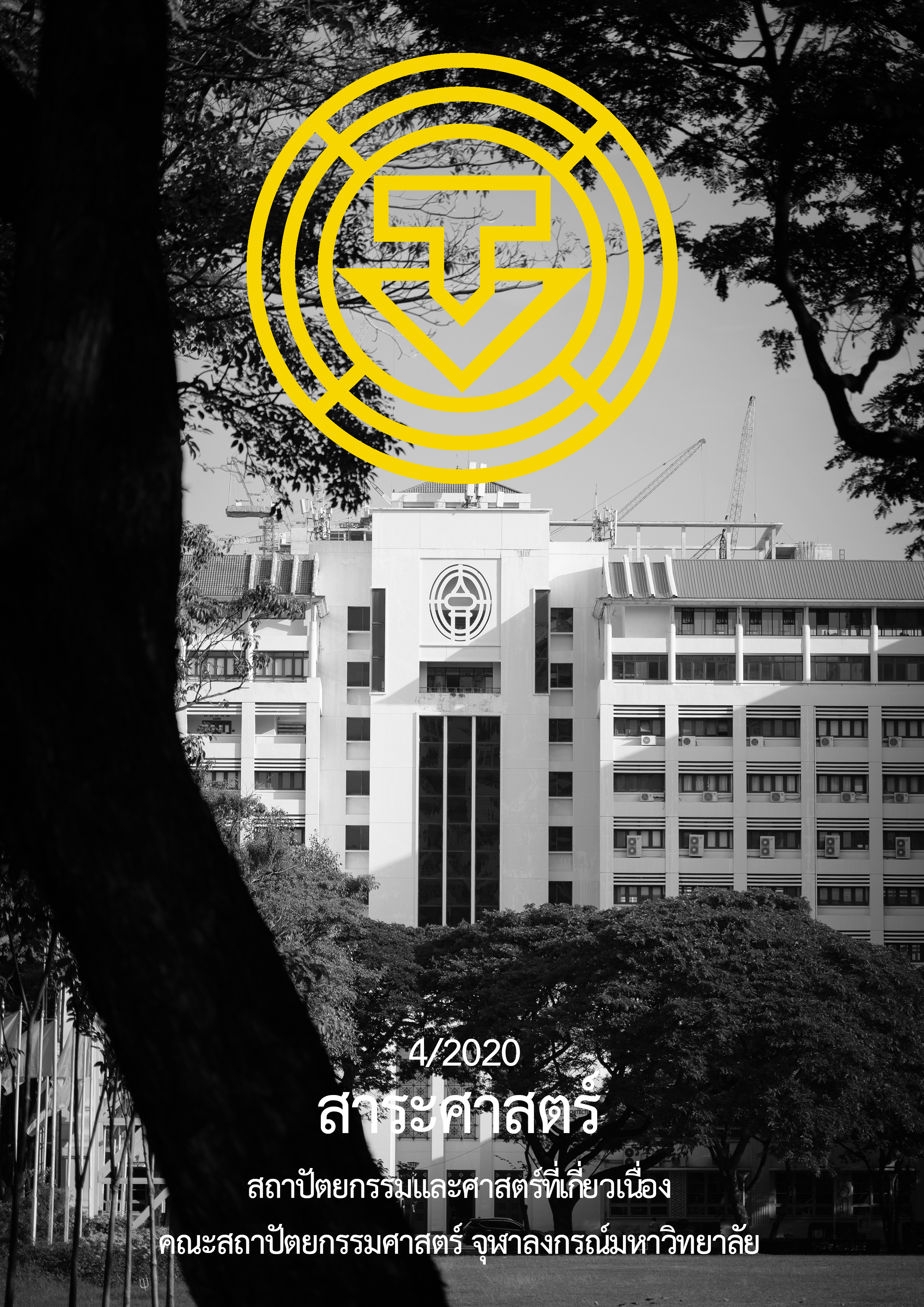Changes in Spatial Usage of Houses before and after of Baan Mankong Participatory Housing Design Process: A Case Study of The Thai-Muslim Project, Pathumtahni
Main Article Content
Abstract
Housing design for people with low income was essential as the occupation behavior of the residents was different from the people with middle-high income. The design should be in budget but able to respond to the occupation behavior with adequate space and demand of the residents. Ban Mankong’s design process was the participatory housing design process for people with low income by studying some part of the former houses but without the observation and survey the using spaces. The behaviors in former environment influenced the new one; therefore, This article explores the use of space. Analyze the change in space usage and study the house space limitations after the stable house process the study of the changes of using space in the old house to the current one was important to the design of Ban Mankong in concordance with the demand of the residents. This study selected 4 case studies studying using space of the house in pre-Ban Mankong process by the interview and post Ban Mankong process by observation then analyzed the changes of housing space using behavior of the residents.
The results revealed that (1) the housing change found that the numbers of members changed up and down without main career change, no housing area use for the career. (2) physical feature change found that the size of the new house was bigger than the old, the addition of the kitchen, bedroom area, the multipurpose area, the laundering area, the front area was bigger while the restroom area was smaller and (3) using behavior change found that there was no major change as the residents still did everything on the floor. The using behavior change were the use of kitchen outside of the house, prayer at home, the parking lot needed to be rented as there was no space at home.
Moreover, the limitations of the new house were (1) too much using space that might excess the need of the residents which was bedroom (2) the missing and less using space from the need of the residents were the prayer area and storage area for the tidiness, parking space, restroom area and pet area (3) misplaced location which was the kitchen and (4) the design that was not conducive to the using space which were restroom, storage room, praying area, laundry area and the floor hygienic from sitting, eating and sleeping. The limitations found in the new house were from the lack of study in area and using behavior of the residents in the old house in order to be the data for Ban Mankong design process.
Article Details
References
กุณฑลทิพย มาลากุล ณ อยุธยา. (2526). การศึกษาเปรียบเทียบความพอใจระหว่างผู้อยู่อาศัยในแฟลตกับเรือนแถว: กรณีโครงการเคหะชุมชนบางบัว 2. (วิทยานิพนธ์ปริญญามหาบัณฑิต, จุฬาลงกรณ์มหาวิทยาลัย).
วิมลสิทธิ์ หรยางกูร. (2549). พฤติกรรมมนุษย์กับสภาพแวดล้อม: มูลฐานทางพฤติกรรมเพื่อการออกแบบและวางแผน. กรุงเทพฯ: สำนักพิมพ์จุฬาลงกรณ์มหาวิทยาลัย.
สถาบันพัฒนาองค์กรชุมชน (องค์การมหาชน). (2558). โครงการบ้านมั่นคง. กรุงเทพฯ : สถาบันพัฒนาองค์กรชุมชน (องค์การมหาชน).
สถาบันพัฒนาองค์กรชุมชน (องค์การมหาชน). (2560a). คู่มือจัดทำโครงการบ้านมั่นคง การวางผังและการออกแบบ. กรุงเทพฯ: สถาบันพัฒนาองค์กรชุมชน (องค์การมหาชน).
สถาบันพัฒนาองค์กรชุมชน (องค์การมหาชน). (2560b). บนเส้นทางการพัฒนา...บ้านมั่นคง “ไทย-มุสลิมสามัคคี.” กรุงเทพฯ:สถาบันพัฒนาองค์กรชุมชน (องค์การมหาชน).
สมสุข บุญญะบัญชา. (2562). โครงการบ้านมั่นคง: “บ้านที่ให้มากกว่าบ้าน.” วารสารสังคมศาสตร์และมนุษยศาสตร์, 1-17.
Alexander , C. (1979). The timeless way of building. New York: Oxford University Press.
Barcellini, F., Prost, L. & Marianne, C. (2015, September). Designers’ and users’ roles in participatory design:What is actually co-designed by participants. Journal of Applied Ergonomics, 50, 31-40. DOI: 10.1016/j.apergo.2015.02.005
Chawalit Nitaya. (1979). Tung Song Hong: Community involvement, an alternative design and policy implementation proposal. Bangkok: Bouwcentrum International Education.
Manum, B. (2005). Generality versus specificity; 5th International Space Syntax Symposium. Delft: Techne Press.
Newman, L. S., Duff, K. J., & Baumeister, R. F. (1977). A new look at defensive projection: Thought suppression, accessibility, and biased person perception. Journal of Personality and Social Psychology, 72(5), 980–1001.


